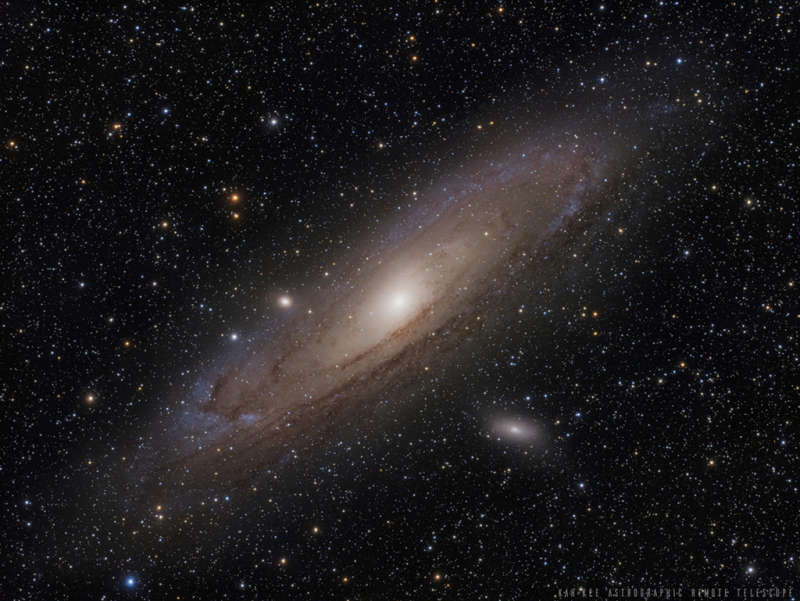 |
Астронет: Астрономическая картинка дня Островная вселенная Андромеды http://variable-stars.ru/db/msg/1648576/eng |
Credit & Copyright: Yuzhe Xiao
Explanation:
The most distant object easily visible to the unaided eye is
M31,
the great
Andromeda Galaxy
some two and a half million light-years away.
But without a telescope, even this
immense spiral galaxy - spanning over
200,000 light years - appears as a faint, nebulous cloud in the
constellation
Andromeda.
In contrast, a bright yellow nucleus, dark winding dust lanes,
expansive blue spiral arms and star clusters are recorded in this
stunning telescopic image.
While even casual skygazers
are now inspired by the knowledge that there are
many distant galaxies like M31, astronomers
debated
this fundamental concept 100 years ago.
Were these "spiral nebulae" simply outlying components of our own
Milky Way Galaxy or were they instead "island universes",
distant systems of stars comparable to the Milky Way itself?
This question was central to the famous
Shapley-Curtis debate of 1920,
which was later
resolved by observations
of M31 in favor of Andromeda,
island
universe.
Experts Debate:
How will humanity first discover
extraterrestrial life?
Authors & editors:
Robert Nemiroff
(MTU) &
Jerry Bonnell
(USRA)
NASA Web Site Statements, Warnings,
and Disclaimers
NASA Official: Jay Norris.
Specific
rights apply.
A service of:
LHEA at
NASA /
GSFC
& Michigan Tech. U.
